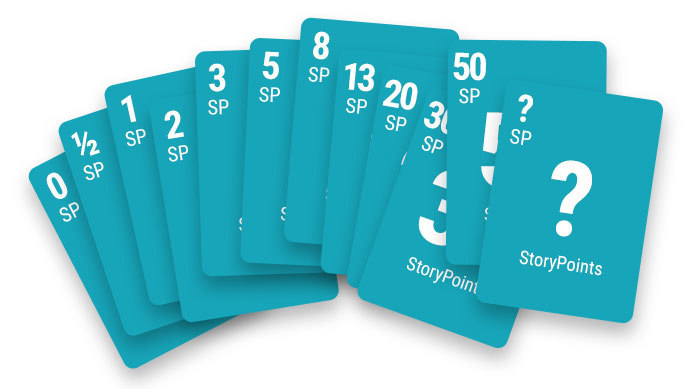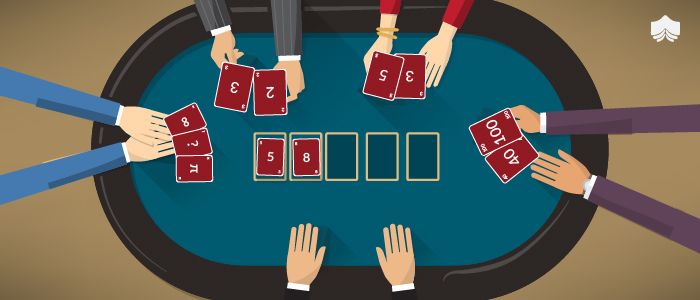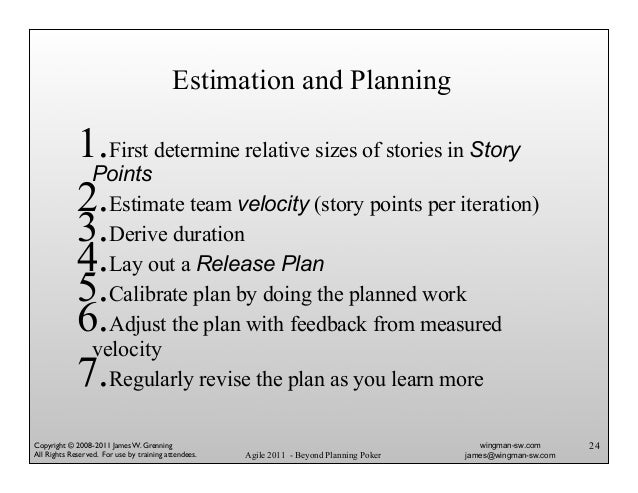Capacity (time) & velocity (points) based planning
Planning Poker Numbers
Planning Poker is a consensus-based technique for estimating, mostly used to estimate effort or relative size of user stories in Scrum. Planning Poker combines three estimation techniques − Wideband Delphi Technique, Analogous Estimation, and Estimation using WBS. Planning Poker was first defined. Planning Poker is an agile estimating and planning technique that is consensus based. To start a poker planning session, the product owner or customer reads an agile user story or describes a feature to the estimators. Each estimator is holding a deck of Planning Poker cards with values like 0, 1, 2. While doing scrum when it is time to do poker planning - during Story Time or during Sprint Planning? If it is during Story Time, then the only thing to do in Sprint Planning is to select stories for Sprint Backlog and write down tasks for each user story? Also, take a look at this question: Why use both story points and hours?
(Scenario 1) Imagine you have a new team with members that have hardly worked together in a scrum team before. Perhaps they are adopting scrum, or that the team has been pulled together from different sources.

As there is no history of velocity and the initial relationship of points to sprint length is going to be volatile for the first few sprints, it would be tempting to switch to capacity based planning where we talk about how much time it will take to execute the tasks as there is a stronger correlation to time taken during the earlier sprints.
(Q1) If capacity based planning is used, would the team still estimate story points in order to establish velocity on hindsight and then subsequently switch over to velocity based planning?
(Scenario 2) With velocity planning where points are awarded to stories which are reviewed in the 'What' half of sprint planning, during the 'How' part if the team then break down the stories into tasks of a day or less in order that progress can be measured, and they may subsequently re-negociate with the PO on how much they can deliver:
(Q2) ...are they not effectively capacity planning in any case?
Development Teams must deliver value, and should therefore be careful to avoid becoming story point accountants.
During Sprint Planning, it's best to look at the forecast of work in aggregate and decide 'is the Sprint Goal for this work achievable?'. Story points are indicators that can assist the team in making this decision. They are not a method of calculation.
I'd encourage a team from the beginning to take this more holistic view. The forecast of work may be modest until experience is gained; if it proves too conservative then additional work can be brought forward.
- Log in or register to post comments
Hi Damian,
For a new Scrum team with no history of velocity, one common way to forecast a team’s velocity is to have the team pull PBIs one by one to determine what PBIs the Team could deliver during a single sprint.
There are 2 way to perform capacity based planning:
1. Estimate how much time it will take to have a PBI be Done.
2. Decompose each PBI to actionable tasks. Estimate how much time it will take to execute the tasks.

The Team could simply add the hour each PBI/task cost and compare to Team’s capacity to determine what PBIs it could commit.
If the forecasting or commitment seems reasonable, the Team could simply add the size of the PBIs pulled to Sprint Backlog and use that as the Team’s forecasted velocity.
There are no switch problem, but using Velocity from now on.
Story Point Poker
There is a disadvantage by using capacity based planning or idea hour as estimating unit of PBIs.
Image that a PBI’s size is 24 hours in Product Backlog.
The team pull it to Sprint backlog and decompose to 5 Tasks listed as follows:
Task1: 6 hrs.
Task2: 4 hrs.
Task3: 8 hrs.
Task4: 5 hrs.
Task5: 4Hrs
Total: 27 hrs.
There should be a confusing between a PBI and tasks decomposed.
Planning Poker Online
Estimates are not commitments.
For planning purpose, velocity during the “what” part is most useful when expressed as a range. During the “how” part, if the cost is out of range, they may re-negotiate with the PO to remove several item or just start the sprint. Velocity is measured by adding the size of the PBIs that are “COMPLETED” by the end of the sprint. Velocity does not include the size numbers of partially completed PBIs.

As the Team builds up a history of actual velocities, an effective velocity range will be used as a planning tool and as a team diagnostic metric.
- Log in or register to post comments
Each new team starting together has similar issue. To mitigate risk of unknown you can coach team to cut risk horizon and shorten the sprint length to expose to risks and unknown faster. After couple of sprint you will have some kind of feeling what team can forecast during sprint. To minimize the risk during sprint planning you can coach team to slice PBI into multiple small task easier to finish and track - which will in the end reinforce team efforts and improve their morale to get things done.
What kind of knowledge gives unknown velocity prediction in terms of initiative team will try to develop? Is it a try to make sure team is not estimating more than stakeholders assumed it will take?
After each three sprint you will have rolling average to try to predict future.
- Log in or register to post comments
Comments are closed.